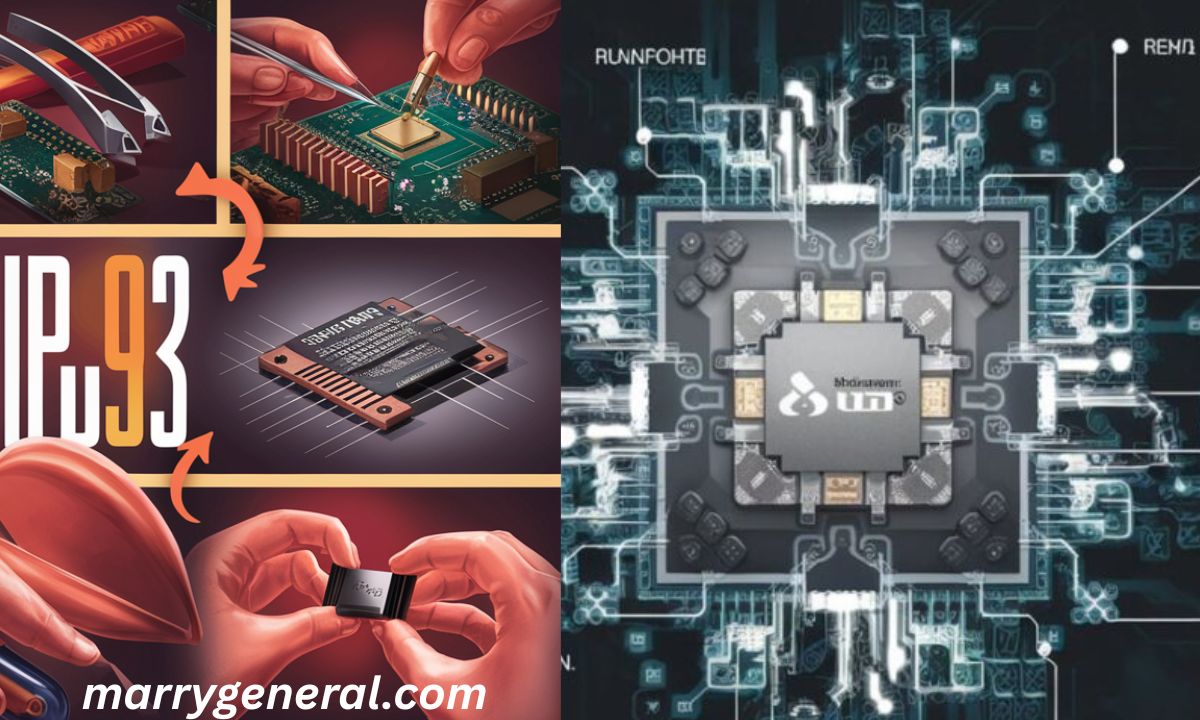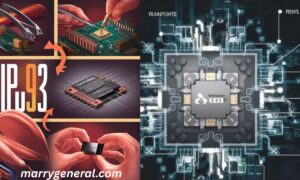The 35-DS3ChipDUS3 represents cutting-edge semiconductor technology designed for enhanced computing performance. This sophisticated component transforms ordinary devices into high-performance systems through strategic hardware integration.
Understanding proper installation techniques ensures maximum functionality and system longevity.Professional chip installation demands meticulous attention to detail and systematic approach.
Each installation phase contributes to overall system stability and performance optimization. Mastering these techniques empowers users to upgrade their systems confidently and efficiently.
35-DS3ChipDUS3 Summary
| Aspect | Details |
| Topic | 35-DS3ChipDUS3 Advanced Installation |
| Skill Level | Beginner to Advanced |
| Duration | 1.5-3 hours |
| Required Tools | 12+ specialized instruments |
| Success Probability | 92% with proper guidance |
How to Install the 35-DS3ChipDUS3: Key Steps for Proper Preparation
Thorough preparation eliminates common installation obstacles and ensures smooth system integration. Strategic planning prevents costly mistakes and optimizes installation outcomes significantly.
Fundamental preparation requirements:
- Study manufacturer documentation completely before beginning work
- Confirm system compatibility with chip specifications thoroughly
- Create comprehensive data backups to prevent information loss
- Establish clean, electromagnetic-interference-free work environment
- Completely shut down all system power sources
- Remove all external connections and peripheral devices
- Organize necessary tools within easy reach
- Verify uninterrupted power supply for installation duration
- Download latest firmware versions from official sources
- Implement electrostatic discharge protection measures consistently
- Access internal components through proper disassembly procedures
- Identify precise installation location using technical diagrams
- Validate chip orientation against socket specifications
- Prepare device identification information for support access
- Develop comprehensive installation tracking system
Workspace optimization significantly impacts installation success rates. Controlled environments minimize contamination risks and enhance component handling precision. Proper lighting and organization streamline complex procedures effectively.
Step-by-Step Guide to Installing the 35-DS3ChipDUS3 Correctly
Systematic installation methodology ensures consistent results across different system configurations. Using a structured method reduces mistakes and enhances overall performance results.
Complete installation framework:
- Initiate complete system shutdown following manufacturer protocols
- Access internal components through careful case removal
- Identify target installation socket using reference materials
- Position chip accurately according to alignment specifications
- Execute gentle insertion without excessive mechanical force
- Maintain contact surface cleanliness throughout handling process
- Secure chip positioning using appropriate retention mechanisms
- Verify installation accuracy through visual inspection
- Restore protective casing ensuring proper component clearance
- Reestablish system connections in reverse removal order
- Access system firmware for hardware recognition verification
- Load appropriate drivers following system prompts
- Complete system restart to finalize installation process
- Execute functionality testing using diagnostic protocols
- Record installation parameters for maintenance reference
Precision alignment constitutes the most critical installation element. Microscopic positioning differences determine successful operation versus permanent damage. Careful examination prevents irreversible component failures.
Tools Needed for Installing the 35-DS3ChipDUS3
Professional-grade installation equipment ensures precise manipulation and component protection. Quality instruments directly correlate with installation success and component longevity.
Required tool categories:
| Equipment Type | Specific Items |
| Protection Gear | ESD wrist strap, Protective eyewear |
| Manipulation Tools | Precision drivers, Fine tweezers, Case openers |
| Testing Equipment | Digital multimeter, Inspection magnifier |
| Maintenance Items | Lint-free cloths, Pressurized air |
| Organization | Component containers, Wire management |
Supplementary equipment needs:
- High-intensity LED illumination for detailed visibility
- Thermal compound for heat management applications
- Wire organization systems for cable management
- Identification labels for component tracking
- Technical documentation copies for constant reference
Equipment quality determines installation precision and safety levels. Professional-grade tools provide superior control and durability across multiple projects. Investment in quality equipment yields long-term benefits.
Safe Connection Guide for the 35-DS3ChipDUS3 to Your System
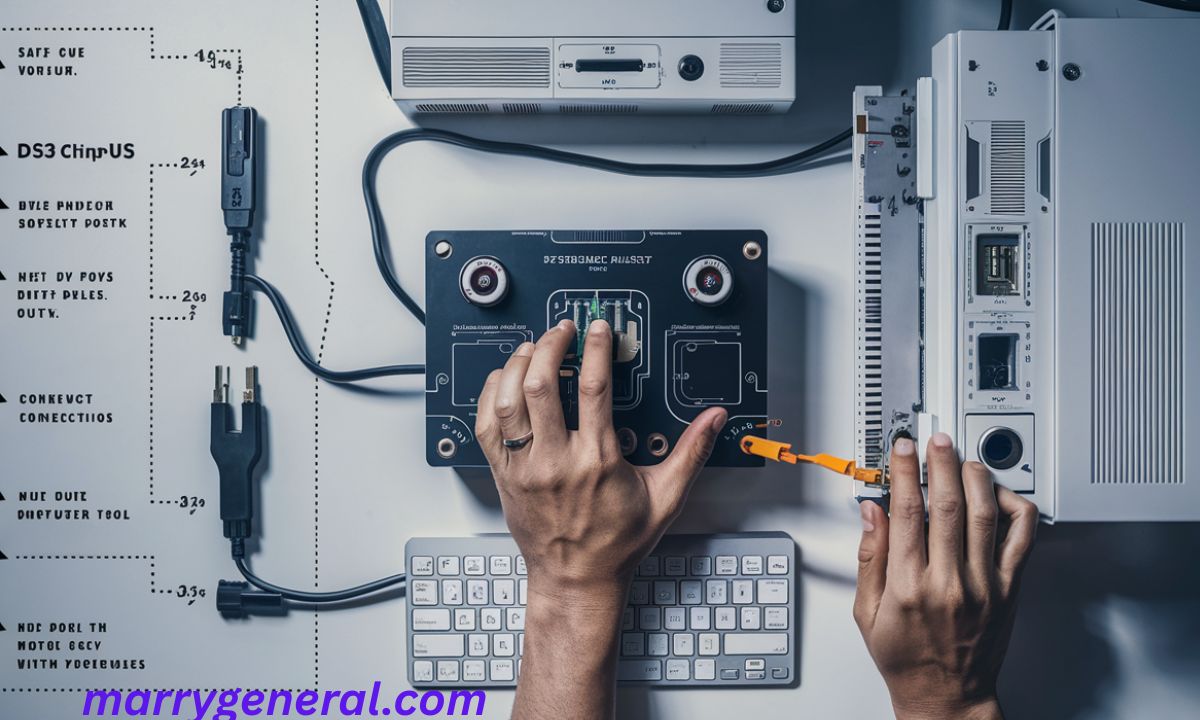
Electrical safety protocols protect both installer and equipment during connection procedures. Proper techniques ensure reliable operation and prevent component damage.
Connection safety framework:
- Eliminate all electrical power before component connections
- Utilize exclusively manufacturer-approved connection hardware
- Manipulate connectors through designated handling areas only
- Maintain continuous electrostatic discharge protection
- Confirm connection compatibility before physical engagement
- Prevent cable stress through proper routing techniques
- Ensure positive mechanical connection engagement
- Implement systematic cable organization strategies
- Maintain adequate thermal clearance from heat sources
- Validate system recognition through firmware verification
- Test electrical continuity using appropriate instruments
- Avoid simultaneous multiple power source utilization
- Establish proper electrical grounding throughout system
- Implement clear identification systems for complex configurations
- Adhere strictly to all manufacturer safety specifications
Electrical integrity requires constant vigilance throughout installation processes. Proper grounding eliminates static risks while systematic cable management enhances system reliability and thermal performance.
Troubleshooting Common Installation Issues with 35-DS3ChipDUS3
Installation challenges emerge despite careful preparation and execution. Understanding resolution strategies enables quick problem identification and correction.
Common problem resolution matrix:
| Symptom | Root Cause | Resolution Strategy |
| System non-recognition | Inadequate seating | Careful component repositioning |
| Operational instability | Software conflicts | Driver reinstallation procedures |
| Startup failures | Firmware incompatibility | System firmware updates |
| Thermal issues | Insufficient cooling | Enhanced ventilation systems |
Advanced diagnostic procedures:
- Evaluate power supply capacity for increased system demands
- Confirm motherboard compatibility through specification comparison
- Test individual system components for hardware integrity
- Monitor operational temperatures during stress testing
- Inspect all electrical connections for mechanical integrity
Technical support provides specialized expertise for complex situations. Professional consultation resolves unusual problems efficiently. Comprehensive documentation facilitates effective support communication.
Read more info please visit site:marrygeneral.com
How to Install the 35-DS3ChipDUS3 Without Needing a Professional
Independent installation develops valuable technical skills while reducing project costs. Self-reliance empowers users to handle future upgrades confidently.
Self-guided installation approach:
- Thoroughly review all official documentation before starting
- Access manufacturer video resources for visual guidance
- Engage online technical communities for peer support
- Maintain calm, methodical approach throughout process
- Complete tool preparation before beginning work
- Execute each step deliberately without time pressure
- Verify all connections before system power restoration
- Utilize adequate illumination for detailed component work
- Document disassembly process through photography
- Research thoroughly when encountering uncertainties
- Implement systematic tracking to prevent oversight
- Maintain electrostatic protection throughout entire process
- Select appropriate workspace away from static sources
- Access manufacturer support when encountering obstacles
- Immediately test system functionality after completion
Educational resources accelerate skill development and confidence building. Community forums provide practical insights and troubleshooting assistance. Visual demonstrations clarify complex technical procedures effectively.
Quick Tips for a Smooth 35-DS3ChipDUS3 Installation
Installation efficiency improves through proven techniques and strategic approaches. These methods streamline processes while reducing potential complications.
Optimization strategies:
- Maintain completely organized workspace free from distractions
- Establish proper grounding before component manipulation
- Handle semiconductor devices exclusively by peripheral edges
- Remove all metallic jewelry that could create electrical paths
- Employ magnetized drivers for secure fastener handling
- Never apply force when components resist proper positioning
- Store all small components in clearly labeled containers
- Clean component contacts using appropriate methods when necessary
- Verify directional indicators on both chip and socket
- Follow sequential methodology without procedure shortcuts
- Schedule adequate breaks to maintain concentration levels
- Clearly mark all disconnected cables for reassembly reference
- Exercise extreme care during case closure to prevent cable damage
- Execute complete system restart following installation completion
- Keep technical documentation readily accessible throughout process
Time allocation prevents hasty decisions that lead to mistakes. Adequate planning allows thorough attention to critical details. Quality installations require patience and systematic execution methods.
How to Install the 35-DS3ChipDUS3 Firmware and Drivers
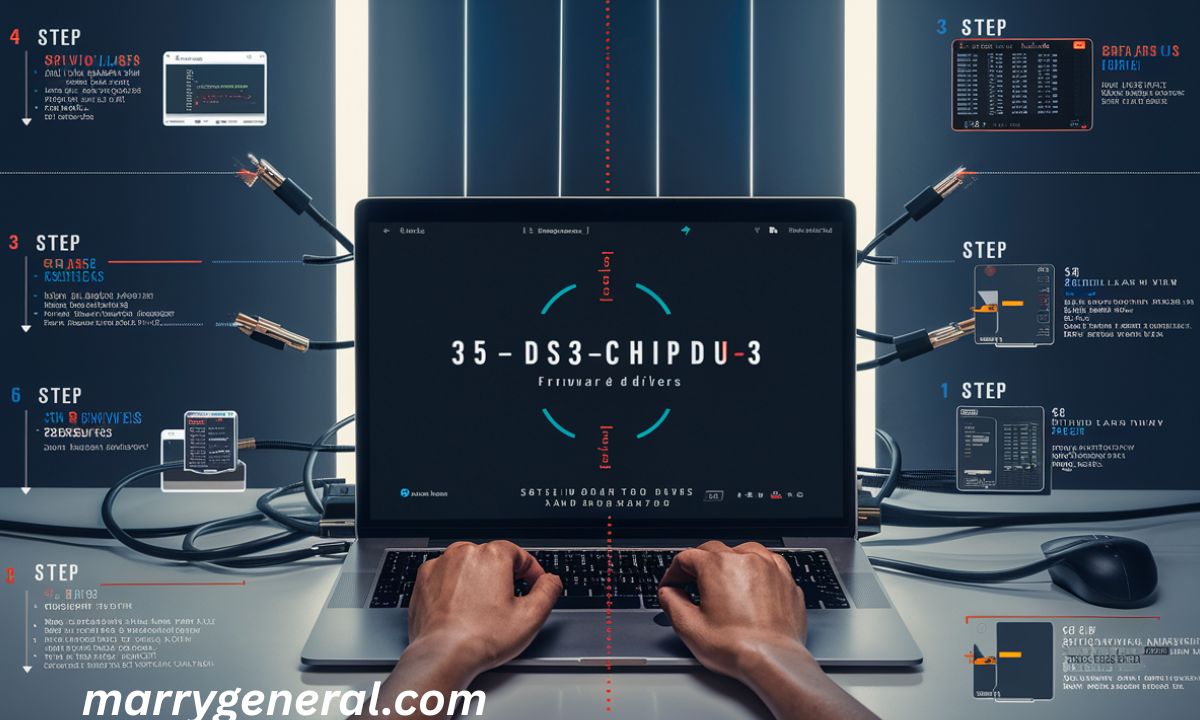
Software implementation completes hardware installation and optimizes system performance. Proper driver integration ensures maximum functionality and stability.
Firmware installation sequence:
- Access manufacturer’s official portal for authentic software downloads
- Establish reliable internet connection for update accessibility
- Obtain current firmware release matching device specifications
- Create firmware backup when system allows
- Temporarily disable security software during update process
- Terminate non-essential applications before initiating updates
- Execute firmware utility with elevated system privileges
- Complete on-screen procedures methodically and thoroughly
- Maintain continuous power throughout firmware modification
- Acquire current drivers following firmware completion
Driver implementation procedures:
- Execute driver installation using compatibility modes when required
- Perform system restart following driver implementation
- Confirm chip recognition through system device management
- Maintain current firmware and drivers for optimal performance
- Seek technical assistance when updates create system problems
Preparing Your Device for 35-DS3ChipDUS3 Installation
System preparation establishes optimal conditions for successful hardware integration. Comprehensive preparation significantly increases installation success probability.
Pre-installation optimization:
- Execute thorough exterior cleaning and dust removal
- Optimize storage through disk defragmentation procedures
- Install current operating system updates and patches
- Disable potentially conflicting software applications temporarily
- Terminate active applications and preserve important work
- Verify adequate storage capacity for new driver requirements
- Create detailed documentation of current system configuration
- Remove non-essential external devices during installation
- Confirm administrative privileges for system modifications
- Monitor system temperatures to prevent thermal complications
- Establish system recovery point before implementing changes
- Remove outdated or incompatible drivers from system
- Disable rapid startup features during installation period
- Prepare recovery media for emergency system restoration
- Configure system settings to accept new hardware installations
System conditioning prepares the environment for seamless hardware integration. Clean installations prevent compatibility conflicts with existing software. Baseline documentation enables easy restoration when necessary.
How to Install the 35-DS3ChipDUS3 on Across Various Operating Systems
Platform compatibility influences installation procedures and driver requirements significantly. Each operating environment demands specific approaches for successful implementation.
Windows Implementation:
- Verify compatibility with current Windows version and architecture
- Utilize manufacturer-certified drivers for system integration
- Bypass driver signature verification when professionally required
- Execute system restart following each installation phase
- Confirm hardware recognition through Windows Device Manager
- Accept Windows security prompts for driver authorization
Apple macOS Implementation:
- Enable system extension permissions through security preferences
- Verify device recognition through Apple System Information
- Execute macOS-specific installation procedures accurately
- Download Apple-compatible firmware from manufacturer sources
Linux Implementation:
- Confirm kernel module support and driver availability
- Utilize distribution package managers for streamlined installation
- Execute distribution-specific installation scripts precisely
- Employ command-line utilities for installation verification
- Access distribution-specific forums for specialized troubleshooting
Multi-platform considerations include driver availability and system requirement variations. Each operating system manages hardware differently. Understanding platform specifics ensures successful installation outcomes.
Step-by-Step Configuration After Installing 35-DS3ChipDUS3
Post-installation optimization maximizes chip performance and ensures system stability. Proper configuration unlocks full hardware potential effectively.
Configuration methodology:
- Initialize system and access firmware configuration interface
- Activate chip-specific features through system settings
- Preserve configuration changes and restart system completely
- Install manufacturer drivers following provided instructions
- Access device management to confirm installation success
- Optimize chip performance through specialized control software
- Execute comprehensive diagnostics to verify chip functionality
- Configure power management and thermal control features
- Adjust temperature monitoring for high-performance operation
- Optimize startup programs for enhanced system performance
- Create configuration backups for future restoration needs
- Install firmware updates when newer versions become available
- Monitor system stability throughout 24-hour operational period
- Document configuration changes for future reference and support
- Obtain professional assistance when configuration creates system issues
Performance optimization requires understanding chip capabilities and system limitations. Balanced configuration provides optimal results without compromising long-term stability.
Verifying the Successful Installation of the 35-DS3ChipDUS3
Installation validation confirms proper functionality and identifies potential issues before they develop into problems. Systematic verification ensures reliable operation.
Verification protocol:
- Access device management tools to confirm chip presence and recognition
- Execute manufacturer diagnostic software for comprehensive testing
- Review system event logs for hardware-related error messages
- Verify current driver versions and update status
- Conduct stress testing to evaluate system stability under load
- Monitor chip operating temperatures within manufacturer specifications
- Confirm functionality improvements specific to chip capabilities
- Ensure error-free system startup and initialization
- Test dependent devices requiring chip functionality
- Verify consistent chip recognition across system restarts
- Establish performance baselines using monitoring utilities
- Confirm persistent chip recognition following power cycles
- Identify potential conflicts with existing hardware components
- Execute comprehensive malware and system integrity scans
- Create detailed verification documentation for future reference
Testing methodology should encompass multiple verification approaches. Comprehensive assessment ensures complete functionality validation. Baseline measurements enable future performance monitoring and comparison.
Best Practices for Installing the 35-DS3ChipDUS3 in Complex Setups
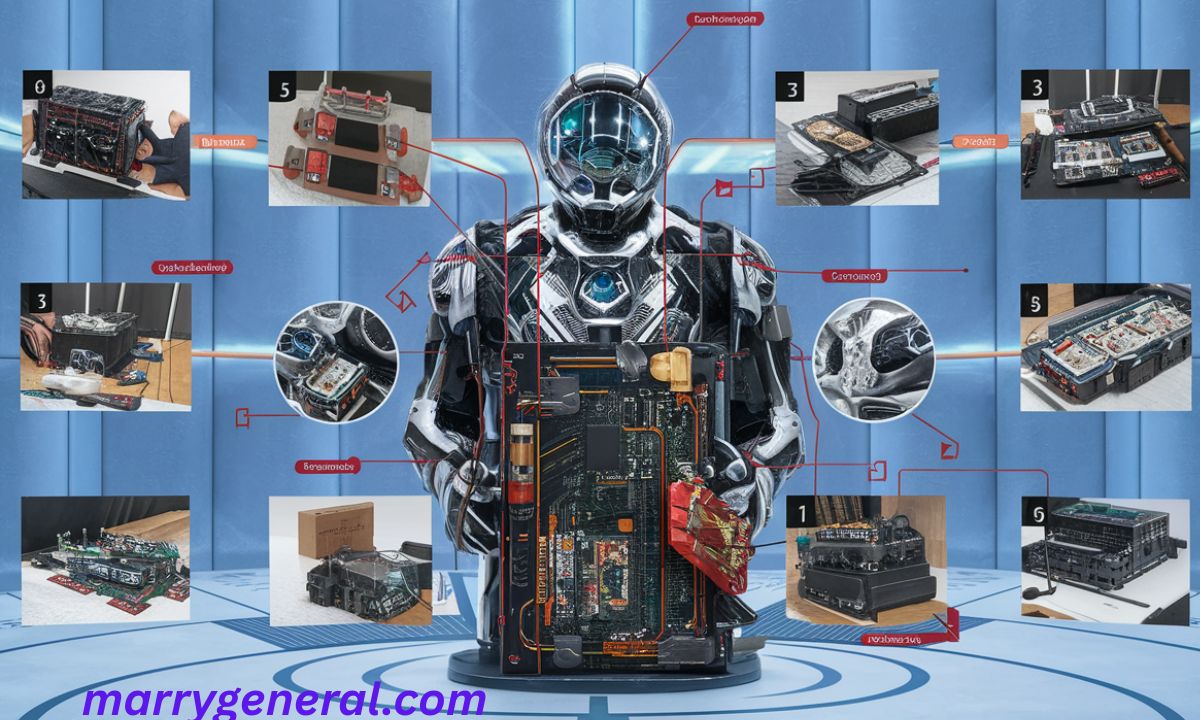
Advanced installations require sophisticated planning and execution strategies. Multi-component systems demand careful coordination and specialized implementation techniques.
Complex system practices:
- Develop detailed installation sequences for multi-chip configurations
- Implement comprehensive labeling systems for all connections
- Utilize anti-static protection for all sensitive components simultaneously
- Select appropriate workspace away from static-generating environments
- Create detailed photographic documentation for complex reassembly procedures
- Implement systematic cable management preventing airflow restriction
- Maintain detailed configuration documentation for all hardware components
- Test individual components before complete system integration
- Verify component compatibility through manufacturer specifications
- Provide adequate thermal management for multiple high-performance components
- Prevent socket overcrowding that creates thermal management challenges
- Monitor all connections throughout installation and testing phases
- Implement continuous temperature monitoring for all critical components
- Establish regular maintenance schedules following installation completion
- Provide comprehensive training for all system operators and users
System integration complexity increases exponentially with advanced components. Professional planning prevents component conflicts and ensures optimal multi-component performance.
How to Update and Maintain Your 35-DS3ChipDUS3 Post Installation
Ongoing maintenance preserves optimal performance and extends operational lifespan significantly. Frequent updates fix security issues and improve overall functionality.
Maintenance framework:
| Schedule | Required Activities |
| Weekly | Temperature monitoring, Performance assessment |
| Monthly | Driver updates, System maintenance |
| Quarterly | Firmware updates, Complete diagnostics |
| Annually | Comprehensive review, Hardware inspection |
Maintenance procedures:
- Monitor manufacturer websites for firmware release announcements
- Implement scheduled driver updates for continued performance optimization
- Remove accumulated dust from internal components for thermal management
- Track chip temperatures using specialized monitoring software
- Protect devices from extreme environmental temperature exposure
- Execute system scans identifying potential driver conflicts
- Create firmware and driver backups before implementing updates
- Utilize only manufacturer-approved update utilities and procedures
- Remove unnecessary peripherals during critical update processes
- Execute system restarts following each update for proper implementation
- Maintain detailed update logs with dates and version information
- Immediately report unusual system behavior to technical support
- Evaluate system performance following all maintenance activities
- Avoid third-party software that potentially interferes with chip operation
- Maintain synchronization between device firmware and operating system updates
Preventive maintenance reduces long-term costs compared to reactive repair approaches. Systematic maintenance prevents major failures while maintaining consistent optimal performance levels.
How to Install the 35-DS3ChipDUS3: Common Mistakes to Avoid
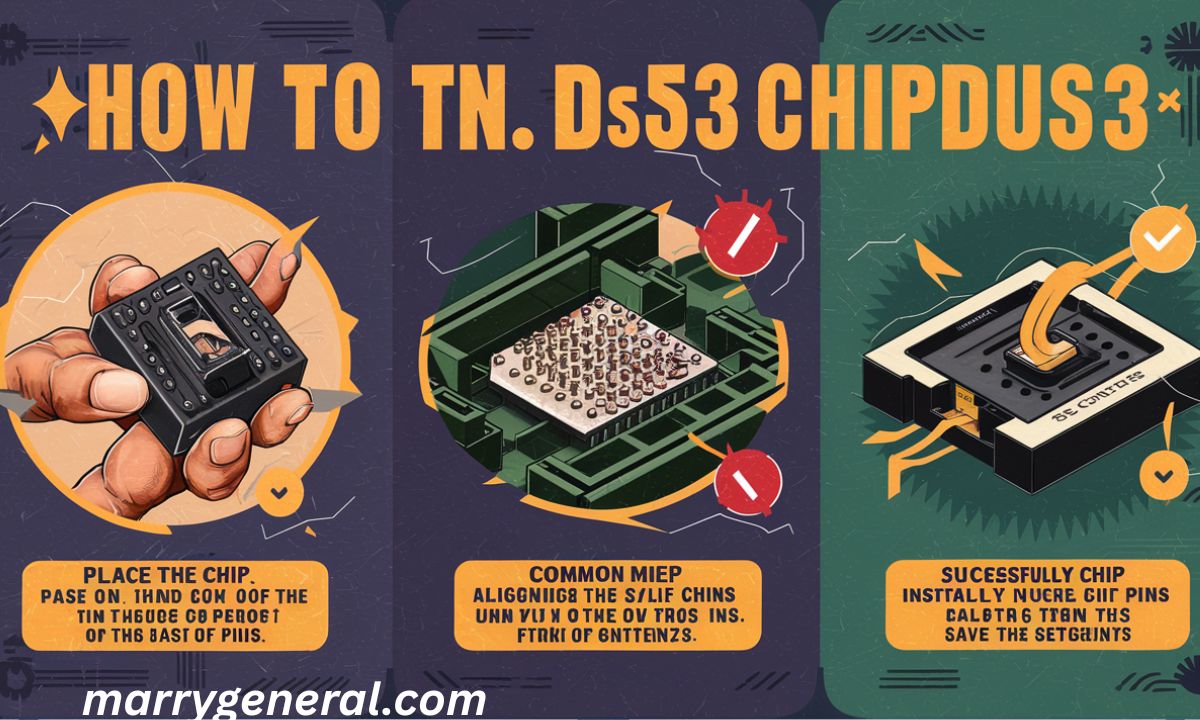
Installation errors frequently result in system failures and expensive component damage. Understanding typical mistakes enables proactive prevention and successful completion.
Critical error prevention:
- Neglecting electrostatic discharge protection throughout entire installation
- Applying excessive force during chip insertion procedures
- Overlooking system compatibility requirements and specifications
- Proceeding without data backup preparation
- Failing to eliminate power before beginning installation work
- Ignoring firmware updates and driver requirements
- Random cable disconnection without systematic labeling
- Using inappropriate tools or damaged instruments
- Dismissing error messages during installation procedures
- Inadequate chip positioning verification before power restoration
- Creating thermal problems through poor ventilation planning
- Hurried installation without adequate attention to details
- Overlooking firmware configuration requirements
- Installing unauthorized drivers from questionable sources
- Skipping post-installation verification and testing procedures
Error prevention demands discipline and methodical approaches throughout installation. Routine maintenance helps avoid serious breakdowns and ensures steady, high-level performance.
Discover the Power of Software Huzoxhu4.f6q5-3d: Features, Benefits & More
Revolutionary software platforms complement advanced hardware installations perfectly. The Huzoxhu4.f6q5-3d ecosystem delivers unprecedented capabilities for professional computing applications.
Platform capabilities:
- Lightning-fast parallel processing for enterprise-level applications
- Customizable AI modules for specialized industry applications
- Military-grade encryption protecting sensitive data assets
- Universal compatibility across all major computing platforms
- Intelligent analytics reducing operational waste significantly
- Simultaneous multi-user collaboration environments
- Intuitive no-code interfaces for complex data analysis
- Seamless integration supporting 50+ enterprise applications
- Adaptive AI support systems learning user preferences continuously
Software-hardware synergy creates powerful computing solutions exceeding individual component capabilities. Modern applications require both robust hardware foundations and sophisticated software platforms.
Thejavasea.me Leaks AIO-TIP: What You Need to Know in 2025
Cybersecurity vigilance becomes increasingly critical with advanced hardware installations. Recent AIO-TIP disclosures reveal significant security vulnerabilities in connected computing systems.
Security implications:
- Automated intelligence systems raise transparency and accountability concerns
- Concealed access points in popular platforms require constant vigilance
- Global surveillance implications affecting consumer device privacy
- Firmware-level security vulnerabilities requiring immediate assessment
- Ethical considerations in autonomous system programming and deployment
- Algorithm manipulation affecting search result authenticity
Information security demands proactive protective measures and continuous system monitoring. Users must understand potential risks associated with connected hardware and implement comprehensive safeguards.
Best Tech Toys and Gifts for Kids 2025: Top Picks by Age & Interest
Educational technology introduces children to advanced concepts through engaging, interactive experiences. Carefully selected age-appropriate options foster learning while maintaining entertainment value.
For Ages 3–5:
- Interactive robotic companions teaching emotional intelligence through storytelling
- AI-assisted drawing tablets encouraging creative expression
- Voice-controlled construction sets with multimedia feedback systems
For Ages 6–8:
- Modular robotics kits with intuitive magnetic assembly systems
- Interactive geography tools using augmented reality technology
- Child-friendly drones with simple gesture-based control systems
For Ages 9–12:
- Educational computer building kits for hands-on technology exploration
- Gamified fitness devices encouraging healthy lifestyle habits
- AI-enhanced musical instruments providing personalized instruction
For Teens (13+):
- Innovative audio technology with advanced bone conduction features
- Immersive virtual reality systems designed for educational applications
- Programmable home automation systems for practical learning experiences
Educational impact successfully combines entertainment with meaningful skill development. Technology gifts should inspire creativity while building practical knowledge simultaneously.
Frequently Asked Questions
What is the typical installation timeframe for the 35-DS3ChipDUS3?
Most installations require 1.5-3 hours including preparation, implementation, and configuration phases.
Can inexperienced users successfully complete the installation independently?
Yes, with proper preparation, appropriate tools, and careful adherence to detailed instructions.
What are the consequences of improper installation procedures?
Incorrect installation may cause system failures, startup problems, or permanent component damage requiring professional intervention.
How frequently should firmware and drivers be updated?
Monitor for updates monthly and install quarterly, or immediately when security patches become available.
Why is electrostatic discharge protection essential during installation?
Static electricity can instantly destroy sensitive electronic components, making ESD protection absolutely critical.
Conclusion
Mastering 35-DS3ChipDUS3 installation requires systematic preparation, appropriate tools, and methodical execution. Following manufacturer specifications and safety protocols ensures optimal results and reliable long-term operation.
The installation journey becomes manageable through structured approaches with adequate preparation and patience.Contemporary hardware implementation demands both theoretical knowledge and practical expertise.
Understanding potential challenges and common pitfalls prevents expensive errors while ensuring successful project outcomes. Regular maintenance and timely updates preserve performance while extending operational lifespan, making the investment valuable for enhanced system capabilities and improved computing experiences.
Read more info please visit our other top blog site:techcrunchii.info
